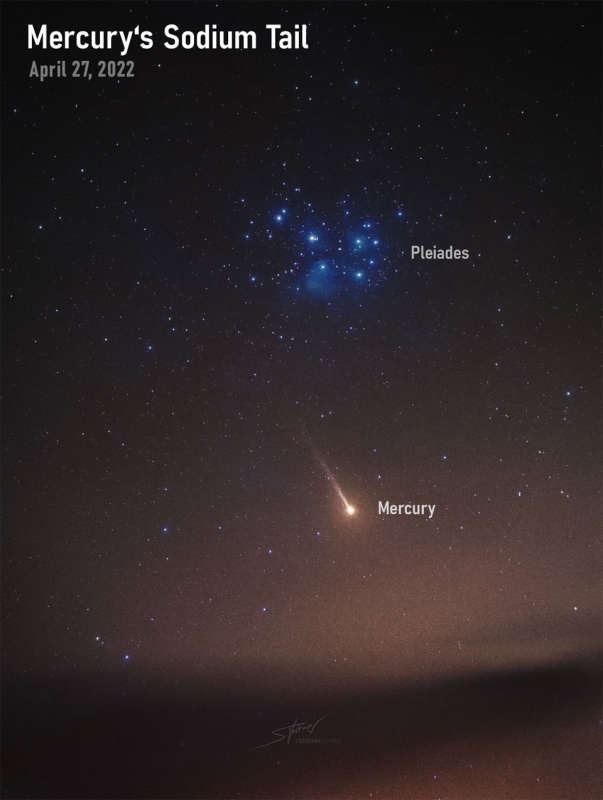Credit & Copyright: Sebastian Voltmer
Explanation:
That's no comet.
Below the Pleiades star cluster
is actually a planet: Mercury.
Long exposures of our
Solar System's innermost planet may reveal something unexpected: a tail.
Mercury's thin
atmosphere
contains small amounts of
sodium
that glow when excited by light from the Sun.
Sunlight also liberates these molecules from
Mercury's surface and pushes them away.
The yellow glow from
sodium, in particular, is relatively
bright.
Pictured, Mercury and its
sodium tail
are visible in a deep image taken last week from
La Palma,
Spain
through a filter that primarily transmits
yellow light
emitted by sodium.
First
predicted
in the 1980s, Mercury's tail was first
discovered
in 2001.
Many tail details were revealed in
multiple observations
by
NASA's robotic
MESSENGER
spacecraft
that orbited Mercury between 2011 and 2015.
Tails, of course, are usually associated with
comets.
1999 2000 2001 2002 2003 2004 2005 2006 2007 2008 2009 2010 2011 2012 2013 2014 2015 2016 2017 2018 2019 2020 2021 2022 2023 2024 2025 |
Yanvar' Fevral' Mart Aprel' Mai Iyun' Iyul' Avgust Sentyabr' Oktyabr' Noyabr' Dekabr' |
NASA Web Site Statements, Warnings, and Disclaimers
NASA Official: Jay Norris. Specific rights apply.
A service of: LHEA at NASA / GSFC
& Michigan Tech. U.
|
Publikacii s klyuchevymi slovami:
Mercury - Merkurii
Publikacii so slovami: Mercury - Merkurii | |
Sm. takzhe:
Vse publikacii na tu zhe temu >> | |
